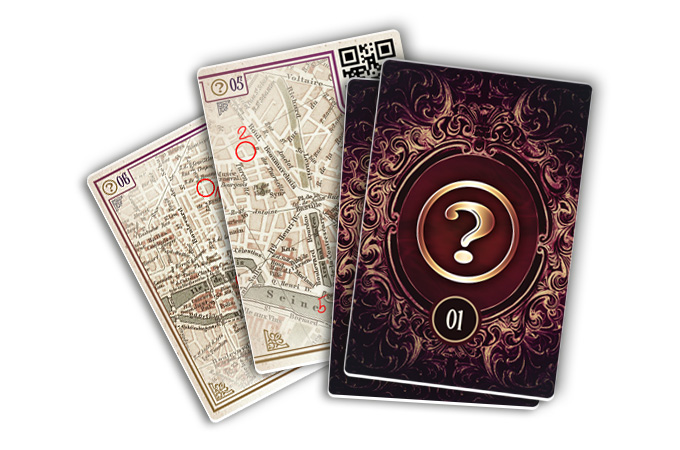Approximately one year ago, we were building the foundations of what you can see now on our KS campaign - a vision of three new standalone Chronicles of Crime games called The Millennium Series. In these short articles, I want to share with you some of the most interesting moments of creation, from the development team’s point of view.
In the second part of our article, we travel to 1900 to meet our second protagonist - Victor Lavel.

Why Puzzles?
Victor Lavel is a journalist and, like all Lavels before him, he is driven by solving mysteries and hunting criminals, even if his current profession is not strictly connected.
First of all, as a journalist, Victor acts differently. He does not have the prerogatives of a policeman, so often he can not obtain all information easily or openly interrogate people. He needs to be smart and connect all possible pieces of information to acquire the intelligence he needs to prove a theory.
We were experimenting with several possible mechanical twists for Chronicles of Crime: 1900, and none of them were as exciting and connected as well to Victor’s character as puzzles. This was a crucial point for us because a good puzzle in a story-driven game like Chronicles of Crime has to be an integral part of the narrative. It can not be just added on top, like a cherry on a cake, or a theme on a Eurogamer.

Integrating Puzzles
So in 1900, the puzzles are a core part of every scenario. You are sure that you will encounter puzzles and you will have to solve them to proceed with a story. Puzzles are in play all of the time, so what does it mean for gameplay?
Usually, you get your first puzzle card early in the scenario. It may show a map, a photograph, a locked door, a safe or something else. Then you try to gather the clues needed to solve the riddle. You may ask people about it, you can look for hints in Virtual Reality scenes, and sometimes you can connect a puzzle card with a specific evidence card or special item.
Later on, in the middle of play, you can have two or even three active puzzles on the table. Sometimes you need to solve one to find hints for the other. Puzzles are logically connected and they support the narrative directly.
Such an approach makes puzzles the central point of the gameplay but of course, does come with a price. If solving puzzles is mandatory to proceed with a scenario and they are complex and often consist of several elements, what about players who miss part of the information and will just be stuck?
Asking for Help
The solution to this had to be thematic as well! So, please meet Charlotte - Victor’s colleague from the newspaper office, who is leading the “Riddles” section of a newspaper! She is a smart girl and Victor can always count on her.

During the game, players can always go back to the Home location (newspaper office) and ask Charlotte for help. First of all, she can tell you if you already have all the elements needed to solve a particular puzzle. That’s useful to know as you can focus on the puzzles you “should” be able to solve, and put the ones you just don’t have all the elements for yet to one side.
Secondly, she can give you two hints about each of the puzzles. The first will give you a little help, but the second will give you much more. If you are precious about your final score at the end of the case it’s important to say that each hint will cost you some points at the end of a game, so be careful with asking Charlotte about everything! We hope that as players delve into the story unfolding in front of them, the puzzles of 1900 will add extra flair and challenge to each case while still being achievable for everyone. In the final part, we will dive deeper into the 2400 implants and cyberspace.
Read Part One - A “Vision” for The Millennium Series
Read Part Three - Jumping into Cyberspace in The Millennium Series
Filip Miłuński
Creative Director
Lucky Duck Games